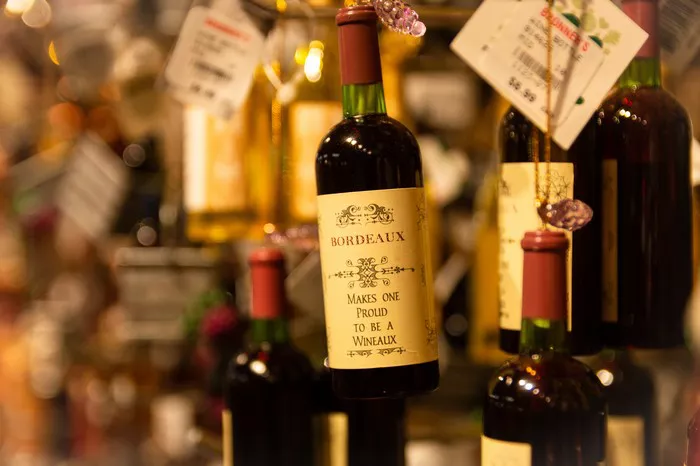Nestled in the picturesque Loire Valley of France, Sancerre has earned its place among the most esteemed wine regions in the world. This small and captivating appellation is celebrated for producing wines that are as enchanting as the landscape itself. Central to Sancerre’s identity is the grape variety that takes center stage, shaping the unique character of these wines. In this exploration, we unravel the enigma of the grape behind Sancerre wine, delving into its history, characteristics, and the artistry it brings to each bottle.
Sauvignon Blanc: The Unmistakable Identity of Sancerre
At the heart of Sancerre’s vinicultural legacy lies the Sauvignon Blanc grape, a varietal that has become synonymous with the region’s signature wines. Sauvignon Blanc’s presence in Sancerre is no mere coincidence; it is an integral part of the terroir that defines this appellation.
The Arrival of Sauvignon Blanc in Sancerre
While the precise origins of Sauvignon Blanc remain shrouded in mystery, its journey to Sancerre can be traced back to centuries ago. The grape likely arrived in the region during the Roman era, carried by travelers and settlers who recognized the potential of the local terroir. Over time, the grape acclimated to the unique climate and soils of Sancerre, giving rise to a distinct expression that distinguishes it from its counterparts in other regions.
How Soil and Climate Influence Sancerre’s Sauvignon Blanc
Terroir, the interplay between soil, climate, and viticultural practices, is the guiding force behind Sancerre’s winemaking philosophy. The region’s unique combination of chalk, limestone, and flint soils imparts a mineral-driven character to its wines. These well-draining soils contribute to the wine’s crisp acidity and vibrant minerality, enhancing the purity of the Sauvignon Blanc fruit.
Sancerre’s climate, influenced by its proximity to the Loire River, plays a pivotal role in shaping the grape’s flavor profile. The region experiences a continental climate with maritime influences, leading to warm summers and cool nights. This diurnal temperature variation prolongs the ripening process, allowing the grapes to develop complexity while retaining their essential freshness.
Sauvignon Blanc’s Flavor Spectrum
Sancerre’s Sauvignon Blanc wines are celebrated for their aromatic splendor and captivating complexity. The grape’s inherent characteristics shine through in every sip, offering a range of flavors that dance on the palate.
The primary fruit flavors of Sancerre Sauvignon Blanc often include zesty citrus, such as lemon and grapefruit, complemented by notes of green apple and pear. These bright fruit notes are balanced by herbaceous undertones, which can evoke sensations of freshly cut grass, bell pepper, and even subtle hints of elderflower.
As Sancerre wines evolve, they develop additional layers of complexity, showcasing mineral-driven nuances that reflect the terroir. The chalky soils contribute to a distinct flinty or smoky character, adding a unique dimension to the wine’s aromatic profile. This captivating interplay of fruit, herbs, and minerals creates a sensory experience that is both inviting and thought-provoking.
Winemaking Mastery: The Art of Crafting Sancerre Sauvignon Blanc
Behind every exceptional bottle of Sancerre Sauvignon Blanc lies the expertise and craftsmanship of dedicated winemakers. The art of crafting these wines involves a delicate balance between tradition and innovation, where the goal is to honor the grape’s essence while embracing modern techniques.
Sancerre’s winemakers employ gentle pressing and temperature-controlled fermentation to preserve the purity of the fruit. The use of stainless steel tanks during fermentation allows for a controlled environment, ensuring that the vibrant aromatics and natural acidity of the grapes are preserved.
In recent years, some winemakers have explored barrel fermentation and aging to add a layer of complexity and texture to Sancerre Sauvignon Blanc. This careful integration of oak imparts subtle nuances of vanilla and spice, enhancing the wine’s overall character without overshadowing its primary attributes.
Food Harmony: Sancerre Sauvignon Blanc on the Dining Table
The versatility of Sancerre Sauvignon Blanc extends beyond its captivating flavors – it is also a prized companion at the dining table. Its vibrant acidity and aromatic profile make it a superb partner for a wide range of dishes.
Seafood and shellfish thrive in the company of Sancerre, as its acidity cuts through the richness of these delicacies. The wine’s herbaceous notes harmonize beautifully with salads, vegetable dishes, and goat cheeses. Additionally, Sancerre Sauvignon Blanc’s ability to complement dishes with citrus-based sauces or vinaigrettes makes it a natural choice for a variety of cuisines.
In Conclusion
The grape behind Sancerre wine, Sauvignon Blanc, weaves a tale of history, terroir, and artistry. Its journey to the Loire Valley, coupled with the region’s unique terroir, has resulted in wines that capture the essence of their origins. From the citrusy zing on the palate to the minerality that reflects the soils, Sancerre Sauvignon Blanc is a testament to the intricacies of winemaking and the beauty of the natural world.
As you uncork a bottle of Sancerre Sauvignon Blanc and savor its aromatic bouquet, take a moment to appreciate the centuries of viticultural wisdom and dedication that have brought this wine to life. With every sip, you’re not just enjoying a beverage; you’re experiencing the embodiment of a terroir, a culture, and a grape that have come together to create a sensory masterpiece.


